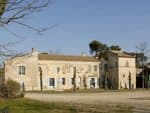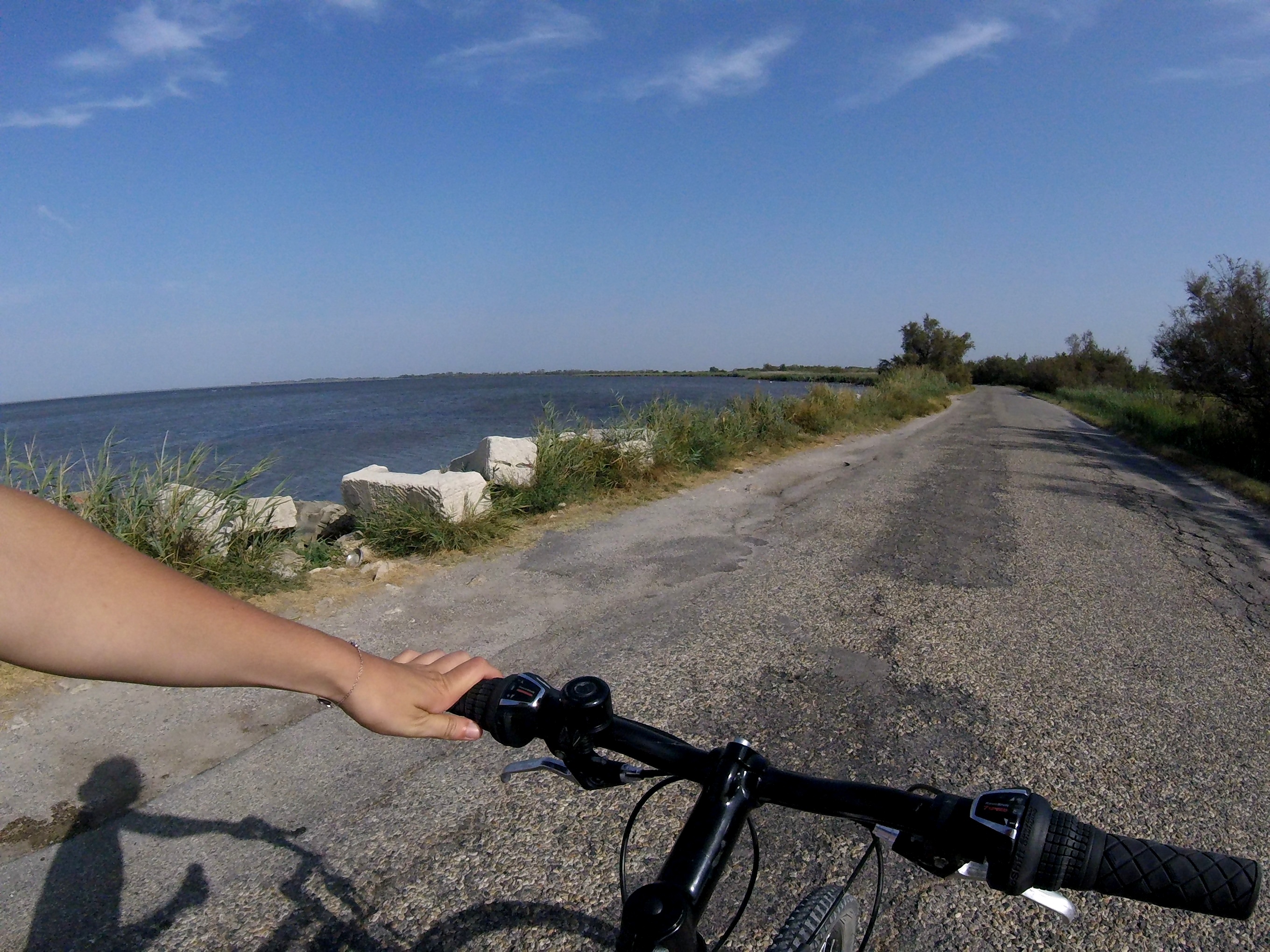
2. L'étang de Vaccarès à vélo - jour 2
Cette deuxième journée de vélo vous amène jusqu’à la fameuse Digue à la Mer et le phare de la Gacholle. Quelle drôle de sensation que de se retrouver entouré d’eau, dans un paysage de carte postale ! Laissez-vous séduire par les différentes ambiances de part et d’autre de la Digue.
12 points of interest
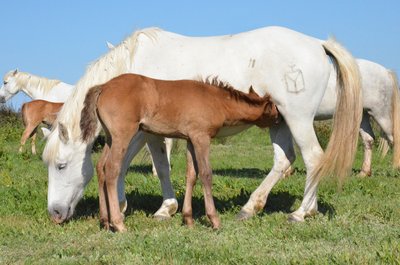
Cheval de Camargue et son poulain - ©Marjorie Mercier - PNR Camargue  Elevage et pastoralisme
Elevage et pastoralismeThe Camargue Horse
The Camargue horse is a very old breed (1978) and would descend from the prehistoric horse of Solutré. Symbol of the Camargue, with a gray-white dress, short ears and a shaggy mane, it is small, about 1.45 m at the withers. His dark hair of birth takes its final colour white-gray when he is around 4 years old. Raised in the Camargue, he is the companion of the guardian and the working tool for raising bulls. Breeding and reproduction criteria are strict to preserve his breed.
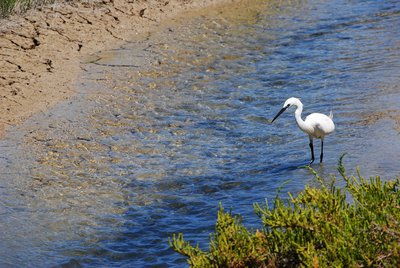
Aigrette garzette - Chloé Scannapiéco - PNR Camargue  Fauna
FaunaThe Little Egret
The Little Egret is one of the most famous birds in the Camargue. White plumage, black legs and yellowish fingers make it easily identifiable. In nuptial plumage, the neck of adults is adorned with two hoopoes about twenty centimeters and their back long silky feathers very thin with separate beards. Today widespread in the southern half of Europe, this species was on the verge of extinction in the early twentieth century, hunted for its feathers that decorated the hats.

Fleurs de saladelle - Chloé Scannapiéco - PNR Camargue  Flora
FloraThe sea lavender
Named "lilac" or "sea lavender", because of its beautiful purple flowers, the saladelle is a plant of the Mediterranean shores which lines the lawns, it is an edible plant. Abundant in the land salted, the sea lavender has long fleshy leaves that we can observe for a long period of the year. This plant is salt tolerant. Excess from the soil is rejected in fine crystals by pores on the underside of the leaves on the underside of its leathery leaves.

Phare de la Gacholle - Chloé Scannapiéco - PNR Camargue  Patrimony and history
Patrimony and historyThe Gacholle lighthouse
Located at 1500m inland, the Gacholle lighthouse entered service in 1884. It allows access to the anchorage of the Beauduc Gulf whilst avoiding the dangers of the tip of Sablon. 17m high, it is powered by solar panels and is distinguished by its sector lighting in green, white and red. The Gacholle lighthouse is one of the welcoming points of the Camargue Nature Reserve. An exhibition on the Camargue coast is open on weekends and public holidays and during school holidays from 11:00 - 17:00 / 11am - 5pm, free admission. Two other lighthouses were built: Beauduc Lighthouse (1903) and Faraman lighthouse (1840).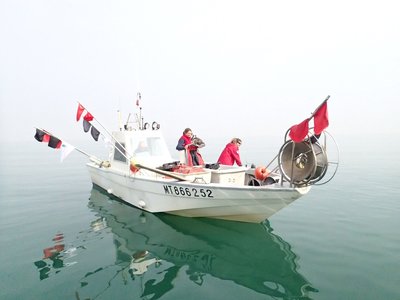
Pêches scientifiques dans la réserve marine - Delphine Marobin-Louche - PNR Camargue  Fauna
FaunaMarine Reserve
The fishing lodgings of the Beauduc Gulf was established in 2013. The goal was to restore this nursery area for fish by creating a "safe area". Covering an area of 450ha and located 700m from the shore, the area is forbidden to all types of fishing, anchorage, dragging and diving. 6 yellow markings enables mark this area at sea. Scientific monitoring is carried out in partnership with fishermen and all the actors of the marine world. The surveillance of the sea and awareness are carried out by officers of the Park.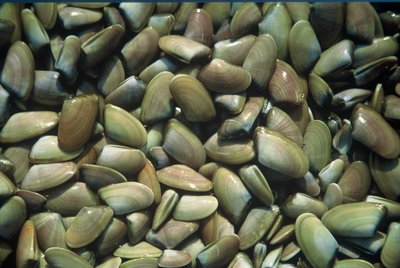
Les tellines - Emmanuel Vialet - PNR Camargue  Fauna
FaunaTellin
Tellin is a small shell that lives buried a few centimetres on coastal sand, close to the shore. Its colour varies from brown to lemon yellow, through a salmon pink. It takes its name from its two valves spread like butterfly wings when it's washed-up and stranded. In the morning, the tellin shell gatherers collect this bivalve using a small trawling net shaped like a fishing net rake. The exploitation of this resource is subject to licensing in the Camargue. Amateur fishermen, anglers, respect the resource and the instructions (1.5kg / day / person. ; min. size: 2.5cm).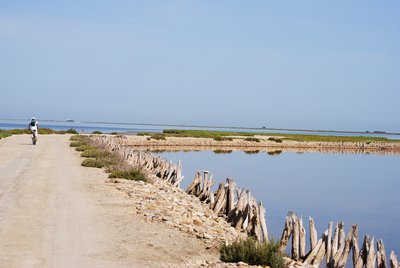
Sur la digue à la mer - Chloé Scannapiéco - PNR Camargue  Water and rivers
Water and riversThe sea wall
During the 19th century, Camargue has faced frequent floods, causing considerable damage. Thus, the sea wall was built between 1857 and 1859 to protect Camargue from sea ingression onto the land during fall and winter which stop any agricultural development in southern Camargue. 2m to 2.50m high, this structure extends over a length of over 40km. It separates the lagoons from the central ponds of Camargue, forming a visual boundary in an infinite landscape.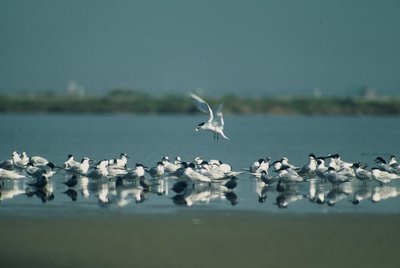
Sternes caugek - Emmanuel Vialet - PNR Camargue  Fauna
FaunaThe Sandwich tern
Terns are long-distance migratory birds which travel thousands of kilometres during their travels. Their final destination is West Africa. The sandwich tern is characterized by a fully black head with a shaggy crest on the neck, a long slightly curved black and yellow beak, an ash gray slender body and long wings. This migratory species, especially present in the sea and lagoons, is observable during the breeding season (spring/summer).
Dunes et oyats - Chloé Scannapiéco - PNR Camargue  Panorama
PanoramaThe beach and dunes
Sandy, Camargue beaches extend on about 70km. The coastal dunes which make up the setting are of great landscape and botanical value with a specific flora and rare species of insects. These animal and plant species which have adjusted to the sandy soil, to drought and salt, live in the dunes (lizards, sand lilies, dune grass ...). Rich but fragile, so be careful when you pass not to uproot the dune grass that are hanging on. Accessing the dunes is strictly prohibited, even on foot.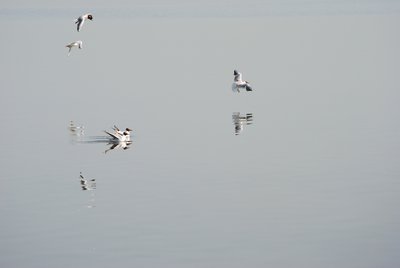
Mouettes rieuses - Chloé Scannapiéco - PNR Camargue  Fauna
FaunaThe black-headed gull
The feathers of the black-headed gull is white on the entire body, except for its which are gray and black in the ends, from August to December. The adult is recognizable by the dark spots behind the eyes. Its white head sports a breeding plumage of chocolate colour. Its short beak, sharp and pointed, is red and black at the tip, as its legs and fingers. Its diet consists of insects, worms, crustaceans but also plants and household waste.
Étangs et marais salants - Elen Le Roux - PNR Camargue  Panorama
PanoramaPonds and salt marshes
Located in the lower Camargue, shallow ponds are separated from the sea by a sand bar. With intermittent communication with the sea through the valves, these lakes are brackish or salty. Privileged shelters for birds and fishes, they also play an important role in water management. Because of their stretch and the richness in invertebrates, they are areas appreciated by birds, including the Greater flamingo.
Pertuis de Rousty - PNR Camargue  Water and rivers
Water and riversHydraulic structures
Camargue is a place of constant exchanges between the sea and the ponds. To regulate the exchanges between these two environments, three openings (or valves) have been positioned along the sea wall. The Fourcade opening is the only functional exchange zone, continuous between the ponds and the sea. It allows the flow of water and fishes and plays a major role for migratory exchanges, wildlife, salt and water levels, fishing, fish rearing and flood management.
Description
Au croisement de Villeneuve et au niveau du snack Les Salicornes, s’orienter à droite sur le C134 "de Fiélouse" en direction de La Capelière. Parcourir 14,5 km. Longer l’étang. Passer devant La Capelière, le Mas de Fiélouse, puis Salin-de-Badon.
1 - Continuer tout droit en direction de la digue à la mer. Poursuivre sur la piste jusqu'à l'observatoire de flamant.
2 - A l’observatoire, tourner à droite et emprunter la digue à la mer en direction du phare de la Gacholle (piste accessible seulement à pied et à vélo). Pénétrer dans la Réserve naturelle nationale de Camargue. Passer le phare et continuer. Continuer sur la digue à la mer jusqu'au Pertuis de Rousty. Au Pertuis, poursuivre tout droit jusqu'au village des Saintes-Maries-de-la-Mer qui se trouve à 6 km.
- Departure : Carrefour D37 - D36B, hameau de Villeneuve, Arles
- Arrival : Office de tourisme, Les Saintes-Maries-de-la-Mer
- Towns crossed : Arles and Saintes-Maries-de-la-Mer
Forecast
Altimetric profile
Recommandations
Respecter le code de la route sur les voies ouvertes à la circulation publique.
Se garer dans un endroit sécurisé.
A La Capelière, se trouve le point d'information de la Réserve nationale de Camargue.
Information desks
the Camargue museum
Mas du pont de rousty, 13200 Arles
Remember to visit the Camargue museum! It is located next to the administrative centre of the Camargue Nature Park.
OT Saintes-Maries-de-la-Mer - Tourisme en Camargue
5 Avenue Van Gogh, 13460 Saintes Maries de la Mer
Access and parking
A 19 km au sud d'Arles, par les D570, D36 et D37.
Parking :
Access
- Emergency number :
- 114
More information
Report a problem or an error
If you have found an error on this page or if you have noticed any problems during your hike, please report them to us here:

